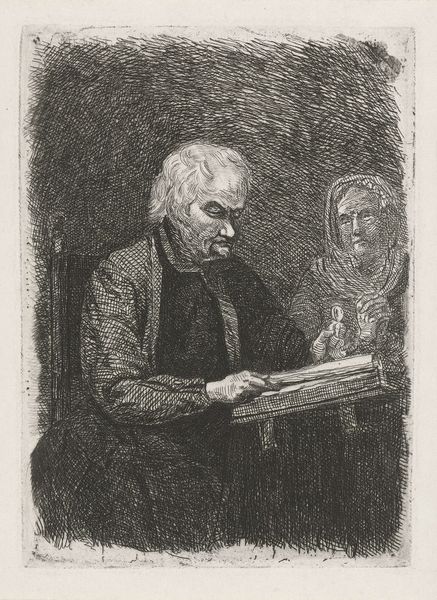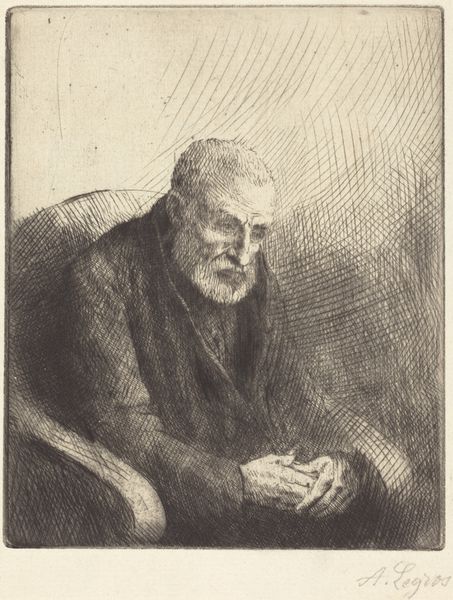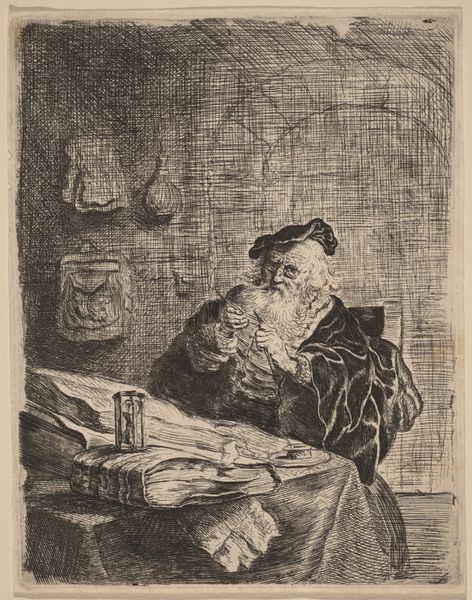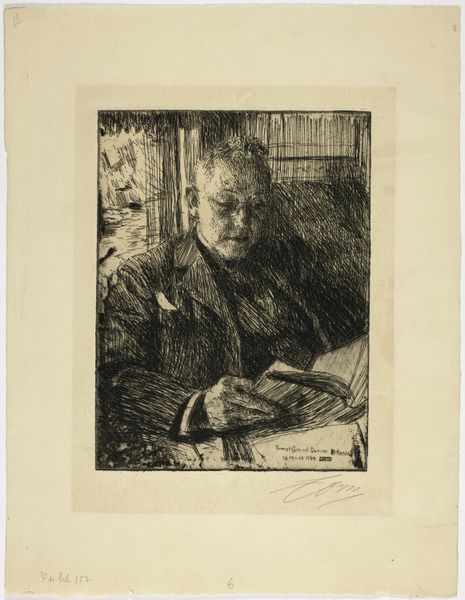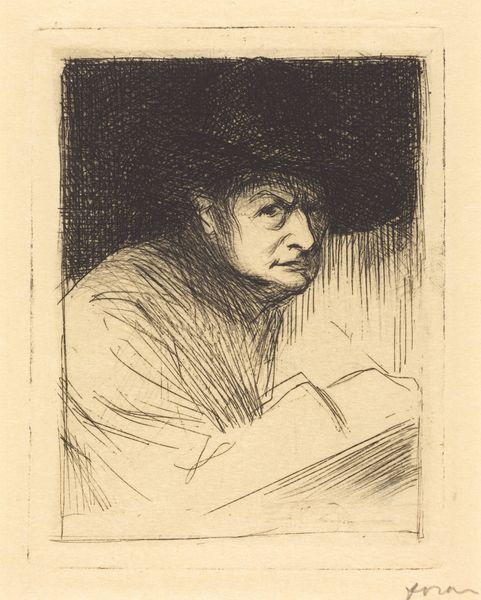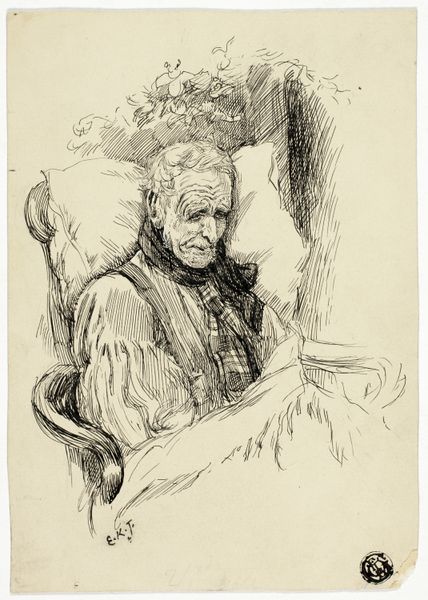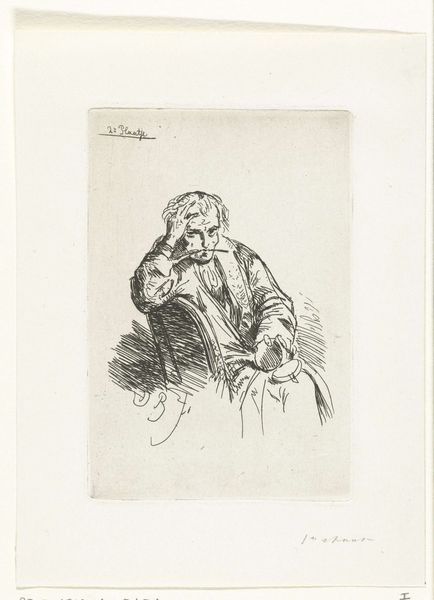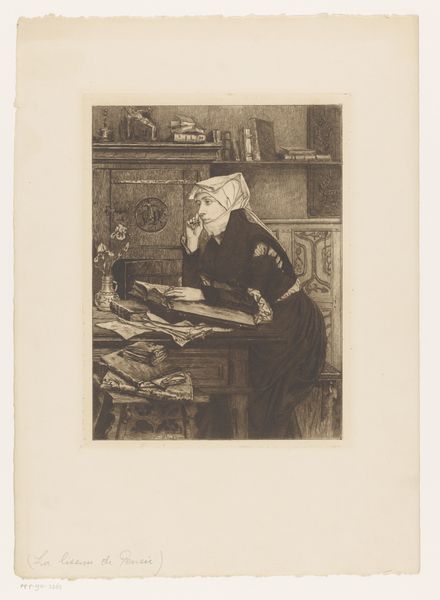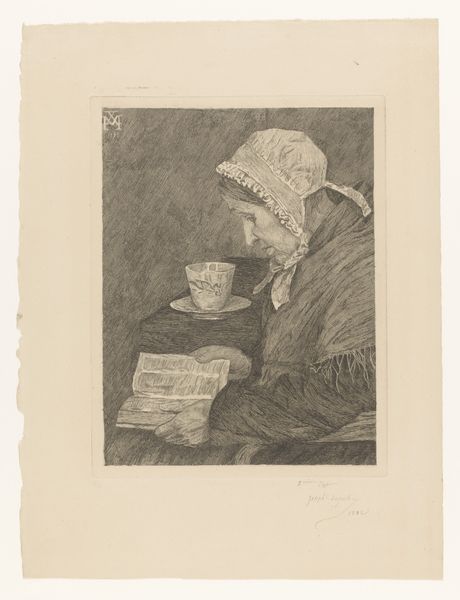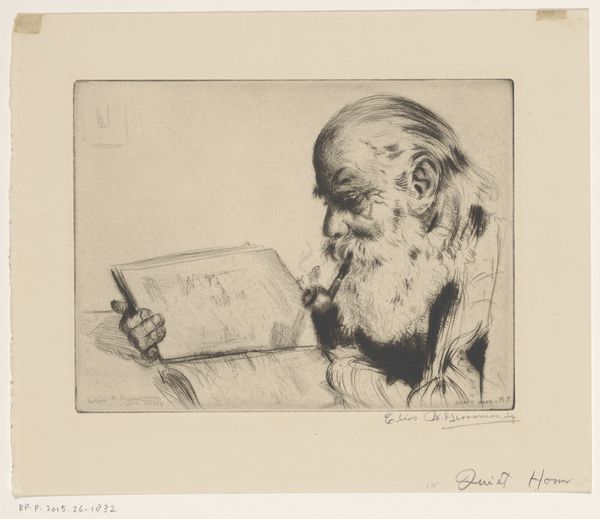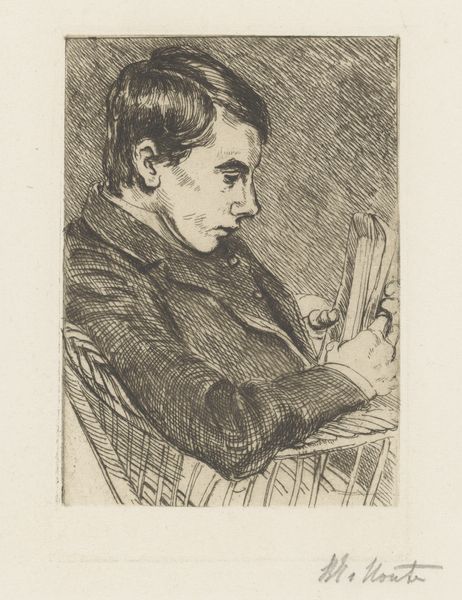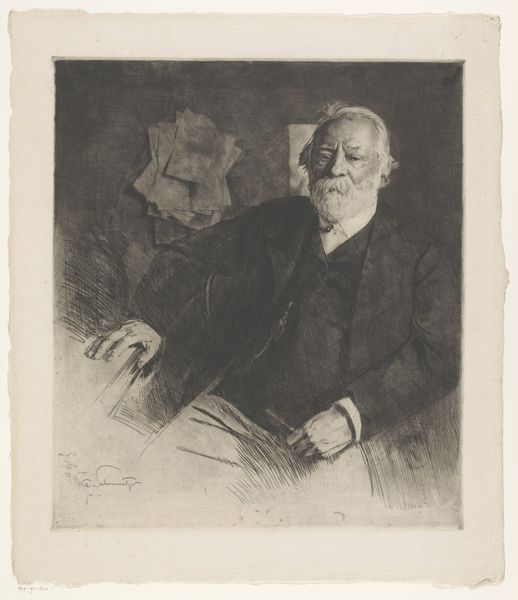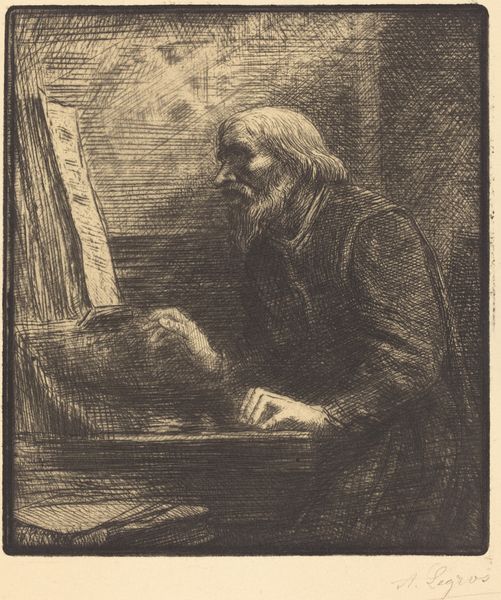
print, etching
#
portrait
# print
#
etching
#
portrait drawing
#
genre-painting
#
realism
Copyright: National Gallery of Art: CC0 1.0
Curator: Here we have Édouard Manet’s etching "The Reader," created in 1861. It’s a compelling example of genre painting executed with the precision afforded by the printmaking process. Editor: Ah, I feel a comforting stillness looking at it. There’s such lovely quiet energy emanating from this gentleman engrossed in his book. The world melts away when you're caught up in the story, doesn’t it? Curator: Precisely. Consider the subject within a historical context. This portrayal reflects an emergent valuing of the individual and domestic life during the mid-19th century. Who were the new reading public? What stories captivated their imaginations? What role did this play in a broader societal change? Editor: It’s so true! You just know he’s found a real page-turner. I’m really struck by how Manet uses line. The sketchy quality gives it this immediacy, like it’s a fleeting moment captured just for us. It's not posed or idealized. Curator: Right, this etching shows Manet already pushing back against the conventions of academic painting, although less radically than he would later. He draws from the tradition of the old masters, certainly, but he's simplifying form and flattening space. Editor: I get that tension. He clearly is studying his elders and thinking about breaking loose, if that makes sense. Curator: It certainly does. Looking at "The Reader" today, we might also consider how the image of a man absorbed in literature implicitly excludes the historically limited access to education and literacy for women and marginalized groups. The “reader” becomes a symbol of privilege. Editor: Yes. Now I can’t help but feel like the story he’s reading… is one not meant for everyone, as we now look at this today. Curator: An insightful perspective. By examining the subject, the historical context, and the evolving accessibility of art education, Manet’s piece generates contemplation on class, access, and how it’s represented through something as personal as a single person enjoying something quiet and intimate. Editor: And that the conversation surrounding one image doesn't stay still; instead it shifts alongside ourselves. I'll carry that image and those questions now... like a good book!
Comments
No comments
Be the first to comment and join the conversation on the ultimate creative platform.
